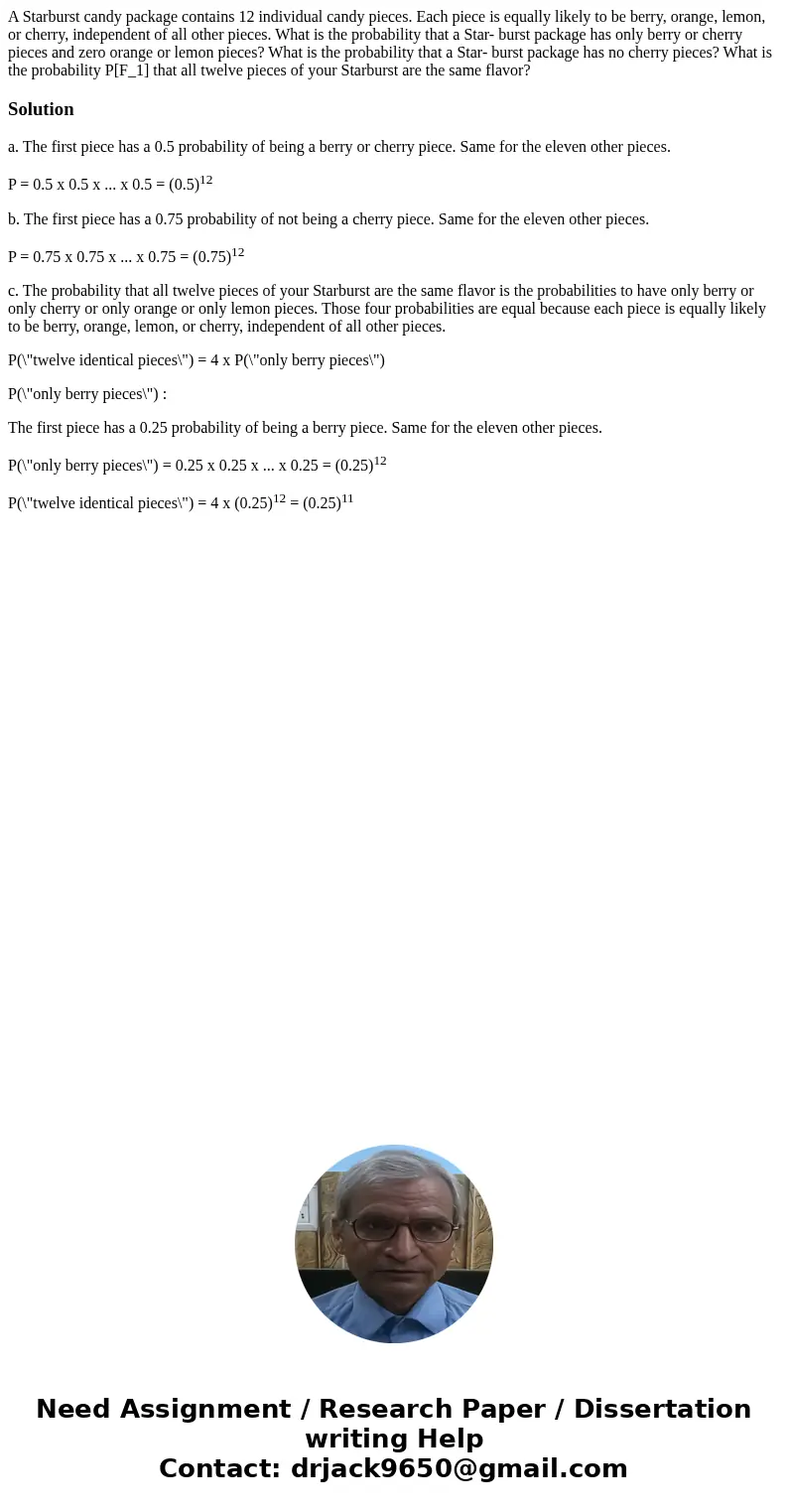A Starburst candy package contains 12 individual candy piece
Solution
a. The first piece has a 0.5 probability of being a berry or cherry piece. Same for the eleven other pieces.
P = 0.5 x 0.5 x ... x 0.5 = (0.5)12
b. The first piece has a 0.75 probability of not being a cherry piece. Same for the eleven other pieces.
P = 0.75 x 0.75 x ... x 0.75 = (0.75)12
c. The probability that all twelve pieces of your Starburst are the same flavor is the probabilities to have only berry or only cherry or only orange or only lemon pieces. Those four probabilities are equal because each piece is equally likely to be berry, orange, lemon, or cherry, independent of all other pieces.
P(\"twelve identical pieces\") = 4 x P(\"only berry pieces\")
P(\"only berry pieces\") :
The first piece has a 0.25 probability of being a berry piece. Same for the eleven other pieces.
P(\"only berry pieces\") = 0.25 x 0.25 x ... x 0.25 = (0.25)12
P(\"twelve identical pieces\") = 4 x (0.25)12 = (0.25)11

 Homework Sourse
Homework Sourse